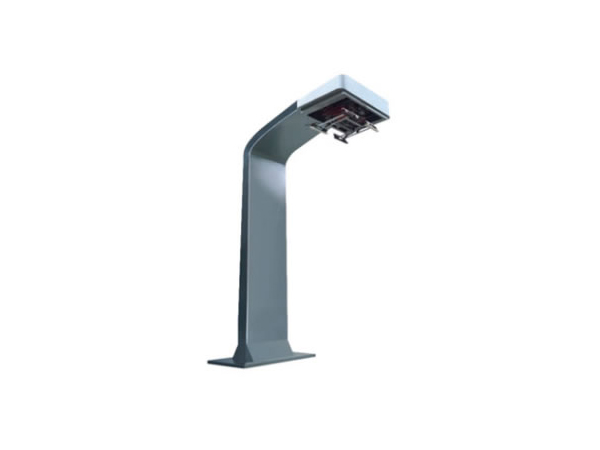-
13822183778@139.com
-
13822183778
AC PLC—— Why do Europe and the United States need the ISO 15118 standard AC charging pile?
European and American standard ordinary AC charging pile charging session, usually OBC (vehicle charger controller) controls the charging state of EVSE (charging pile).
However, the application of AC PLC (power line communication) technology establishes an efficient communication means between the charging pile and the electric vehicle. In AC charging sessions, PLC is used to manage the charging process, including handshake protocol, starting charging, monitoring the charging status, charging and charging end. These processes interact between electric vehicles and charging piles through PLC communication, ensuring that the charging process is efficient and payment can be negotiated.
PLC standards and PLC described in protocols ISO 15118-3 and DIN 70121 specify PSD limits for HomePlug Green PHY PLC signal injection on the control lead for vehicle charging. HomePlug Green PHY Is the PLC signal standard used in vehicle charging as specified in the ISO 15118. DIN 70121: This is an early standard developed in Germany, which is used to regulate the DC communication standard between electric vehicles and charging piles. However, it lacks the security (Transport Layer Security) of the transmission layer during charging communication. ISO 15118: Based on the development of DIN 70121, it regulates the safe charging requirements of AC / DC between electric vehicles and charging piles, targeting the international standard of global communication protocol. SAE standards: Mainly used in North America, also based on DIN 70121 development, and used to standardize the communication standards for electric vehicles and charging pile interfaces.

AC PLC Main features:
Low power: PLC is designed for low power applications, making it the best choice for applications such as smart charging and smart grid, where the technology is applied in the full cycle of the charging session without consuming too much energy.
High-speed data transmission: According to the HomePlug Green PHY standard, you can support a data transmission rate of up to 1 Gbps, which is very important for applications that require rapid data exchange (such as reading SOC data at the car end).
Time synchronization: AC PLC supports precise time synchronization, which is critical for smart charging and smart grid systems that require precise temporal control.
Compatible with ISO 15118-2 / 20: AC PLC is a key communication protocol for AC charging of electric vehicles. This means that it can be used for communication between EV and charging stations (EVSE), supporting advanced charging functions such as demand response, remote control, and PNC for future smart charging and V2G functionality for the smart grid.
AC PLC The application of charging networks in Europe and America: 1. Improve energy efficiency and utilization rate AC PLC charging pile can increase the intelligent proportion of ordinary AC charging piles accounting for more than 85% without increasing capacity, to achieve the target charging station to improve the efficiency of energy distribution and reduce energy waste. Through intelligent control, AC PLC charging pile can automatically adjust the charging power according to the load of the power grid and electricity price changes, so as to achieve more efficient energy utilization.2. Enhance the interconnection of power grid PLC technology enables European and American AC piles to better integrate with smart grid system and realize transnational power interconnection. This contributes to the complementarity of clean energy in a wider geographical range and improves the stability and reliability of the power grid. In Europe, particularly, this connectivity could facilitate the optimal allocation of clean energy such as wind in the north and solar in the south.3. Support the development of smart grid AC PLC Charging pile can be a part of the smart grid to support the development of smart grid. Through PLC technology, charging stations can collect and analyze charging data in real time, conduct energy management, optimize charging strategies, and provide better user services. In addition, the PLC can also support remote monitoring and control to improve the operational efficiency of charging stations.4. Improve the anti-interference ability of the power grid AC PLC The application of charging pile can achieve stable work through intelligent management in the complex power grid environment. This plays a crucial role in ensuring the communication security of charging stations, the reliability of data transmission and the stability of power grid load. In Europe, in particular, the complexity and diversity of the grid requires the charging infrastructure to have strong anti-interference capabilities.6. Reduce the infrastructure construction cost because the layout cost of AC PLC charging pile is far lower than that of DC high-power charging pile. This is an important economic advantage for charging pile operators in Europe and America, which can reduce the overall investment in charging infrastructure and speed up the construction and deployment of charging stations. Therefore, the application of AC PLC charging pile in Europe and the United States is driven by many factors, including cost-effectiveness, convenience of deployment, intelligent management, market demand, policy support and technological progress. Together, these factors make the AC PLC charging pile become an important part of the ev charging infrastructure in Europe and the United States.
Maiida new energy
Overall solution provider, focusing on ISO15118, DIN70121, CHAdeMO, GB / T27930 charging communication protocol field, focusing on EVCC, SECC, European standard, American standard, Japanese standard charging communication solutions, presenting the relevant information and application technology of new energy charging industry.
 How long does it take to charge ···
How long does it take to charge ···
 DC Fast Charging CCS type 2 plug
DC Fast Charging CCS type 2 plug
 The high-voltage and high-curren···
The high-voltage and high-curren···


